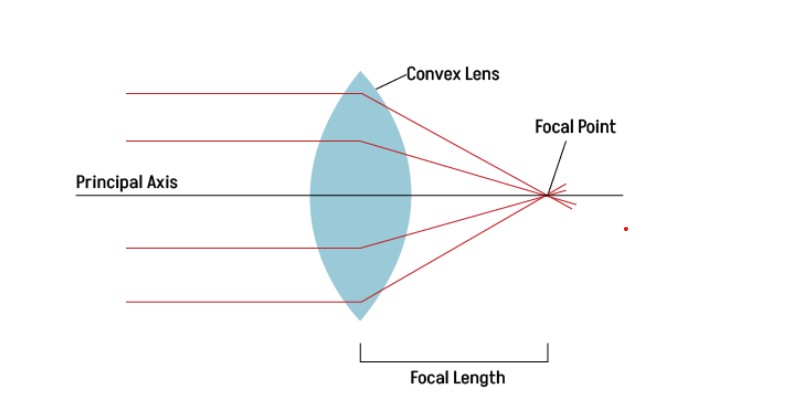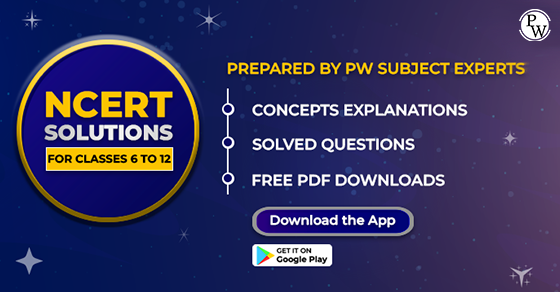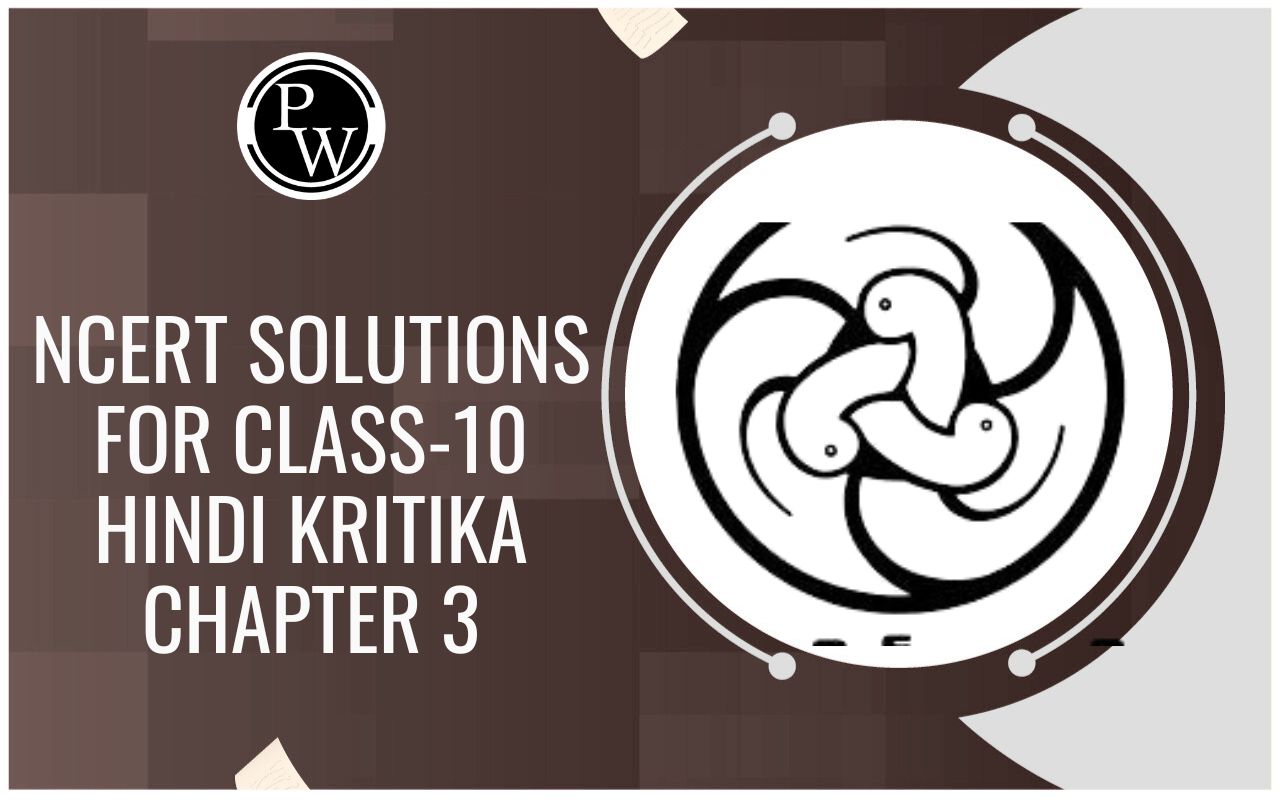
Convex Lens
Sep 26, 2022, 16:45 IST
A lens is a transparent material that concentrates or disperses light rays when it passes through them by refraction. According to the shape and purpose of the lens, they are classified into two types convex lens and concave lens. Let’s learn about convex lenses in detail in this article.
| Table of Content |
Convex lens definition
A Convex Lens merges the rays of light it transmits parallel to its principal axis (i.e., converges the incident rays towards the principal axis), which is relatively thick across the center and are thin at the bottom and top edges. The edges are curved outwards rather than inwards. It is generally used in front of the eye to sharply bend incident light so that the focal length is shortened and the light is focused correctly on the retina.
In general, a convex lens can converge a beam of parallel rays to a point on the other side of the lens. This point is defined as the focal point of the lens, and its distance from the optical center of the ray is called the focal length. The radius of curvature R1 and R2 of the spherical surfaces and the focal length of the lens "f" are related by an approximate equation.
Mathematical Equation
1/f = (n-1) (1/R1 - 1/R2)
Where n is the refractive index.
R1 and R2 are radii of curvature.
R1 = surface very near to the light source.
R2 = surface very far from the light source.
For Double Convex Lens, the focal length is greater due to the presence of the second curved surface. Thus, many optical devices require longer focal lengths than Double Convex Lenses are more preferred.
For the Convex Lens
A ray on the object from the top parallel to the principal axis. It is then refracted by the lens to pass through the focus.
A ray on the object from the top straight through the center of the lens, and there is no change in direction.

Formula
1/f = 1/v + 1/u
Where f is focal length.
- v = image distance from the center
- u = object distance from the center
The focal length is positive in the case of a convex lens.
Real Image and Virtual Image for Convex Lens
- Real Image - A convex lens is used to create a real image, which occurs when the object has more than one focal length away from the lens. It is projected in front of the lens and can be captured on screen and used in cinemas, projectors, etc.
- Virtual image - A convex lens creates a virtual image if the object is placed in front of the focus. It is used in glasses to provide a clear image.
Types of Lens
- Plano-convex Lens
It is curved outwards from one side to the other side. It has a positive focal length that has one spherical surface and one flat surface. These lenses are designed to use infinite parallel light in non-critical applications. These optical lenses are intended for focusing elements. It is used in defense, robots, pharmaceuticals, etc.
- Double Convex Lens
It is bent outward on both sides. It is also known as a biconvex lens or just convex. They have a shorter focal length than the Plano-convex lenses of the same diameter and surface radius. Many optical devices require longer focal lengths. Therefore, double convex lenses are preferable. It is used for projectors, monoculars, telescopes, cameras, etc., producing a virtual image for the human eye and a real image for photography, as an optical sensor, and in glass firing.
- Concave-convex Lens
It is bent inward on one side and outward on the other. It can be used to compensate for spherical aberrations caused by different lenses. It is generally used to control the laser beam. It is a mixture of both lenses with one convex lens and one side of the concave lens, which is a concave-convex lens or meniscus.
Uses of the Convex lens
- It is generally used as hypermetropia, i.e., to correct farsightedness.
- It is used in microscopes, telescopes, and magnifiers to expose all the light to a particular object.
- It is also used in camera lenses because they focus light for a clear image.
- It is also used in front of the eye to sharply bend incident light so that the focal length is shortened and the light is properly focused on the retina.
- It is also used in projectors, telescopes, optical microscopes, and even the peepholes in our homes' doors.
Functions of Convex Lens
- When the object is at infinity, so convex lens forms an image at the focus that is real and inverted.
- When the object is behind the imaginary point, an image is formed between the focus and the imaginary point that is real, inverted, and diminished.
- When the object is at imaginary point, then the image is created at the imaginary point that is real, inverted, and the same size.
- When the object is between the focus and the imaginary point, an image is formed behind the imaginary point that is real, inverted, and magnified.
- When the object is in focus, then the image is at infinity, which is actually inverted and magnified.
- When the object is between the focus and the center of curvature, then the image is formed behind the imaginary point and behind the object, which is virtual and magnified.
Convex lens Example
Q1. A 6 cm high object is placed at 6 cm from an 18-cm focal length. Determine the image distance, the magnification of the image, the image height, and the properties of the image.
Solution: focal length (f) = 18cm
A focal length is positive, that is, a convex lens. So, the focal point is real, or the rays pass through the point.
object height (ho) = 6 cm
object distance (do) = 6 cm
Image formation by the Convex Lens:
Image Distance (di):
1/di = 1/f – 1/do
= 1/18 – 1/6
= 1/18 – 3/18
= -2/18
di = -18/2 = -9 cm
Therefore negative sign denoted the image is virtual or the rays do not pass through the image.
Magnification of Image (m):
m = – di / do
= -(-9)/6= 9/6
= 1.5
A positive sign represents an upright image.
Image Height (hi):
m = hi / ho
hi = m ho
= (1.5)6
=9cm
A positive sign represents that the image is upright.
Properties of the Image:
- It is upright.
- It is virtual.
- The image distance is much greater than the object distance.
- The image is greater than the object.
Frequently Asked Question (FAQs)
Q1. What are the three types of convex lens?
Ans. There are three types of these lenses; they are the plano-convex lens, the double convex lens, and concave-convex lens.
Q2. What can convex lens be used for?
Ans. It is used as a Hypermetropia, i.e., to correct far-sightedness. It is used in telescopes, microscopes, and magnifying glasses to subject all the light to a specific object. It is also used in camera lenses because they focus light for a clear picture.
Q3. What image is formed by a convex lens?
Ans. We can have diminished inverted images, small sizes inverted images, enlarged inverted image, and enlarged erect images.
Q4. Which kind of image is not formed by convex lens?
Ans. Virtual image is not formed by convex lens.
Q5. Are convex lenses always real?
Ans. The convex lens always forms a real image. The convex lens always forms a real image.
Q6. Why is convex Lens called a converging Lens?
Ans . A convex lens is called a converging lens because it converges a parallel light beam on the principal focus point.





